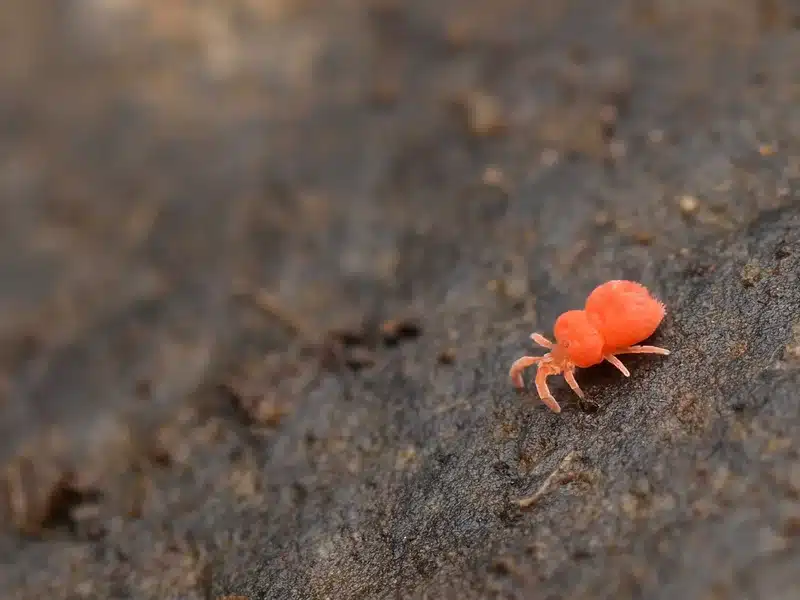When you spot tiny red bugs crawling around your home, it’s natural to worry about what they are and whether they bite. Here in the DC metro area, I’ve noticed that homeowners often struggle to tell the difference between clover mites and chiggers. Both are small, reddish pests that can cause concern, but they’re actually quite different in where they live, what they do, and how they affect you.
Understanding the key differences between clover mites and chiggers matters because the treatment approach for each pest is completely different. One is a harmless indoor nuisance, while the other causes intense itching from outdoor encounters. Let me walk you through everything you need to know about these tiny red bugs so you can identify what you’re dealing with and take the right action.
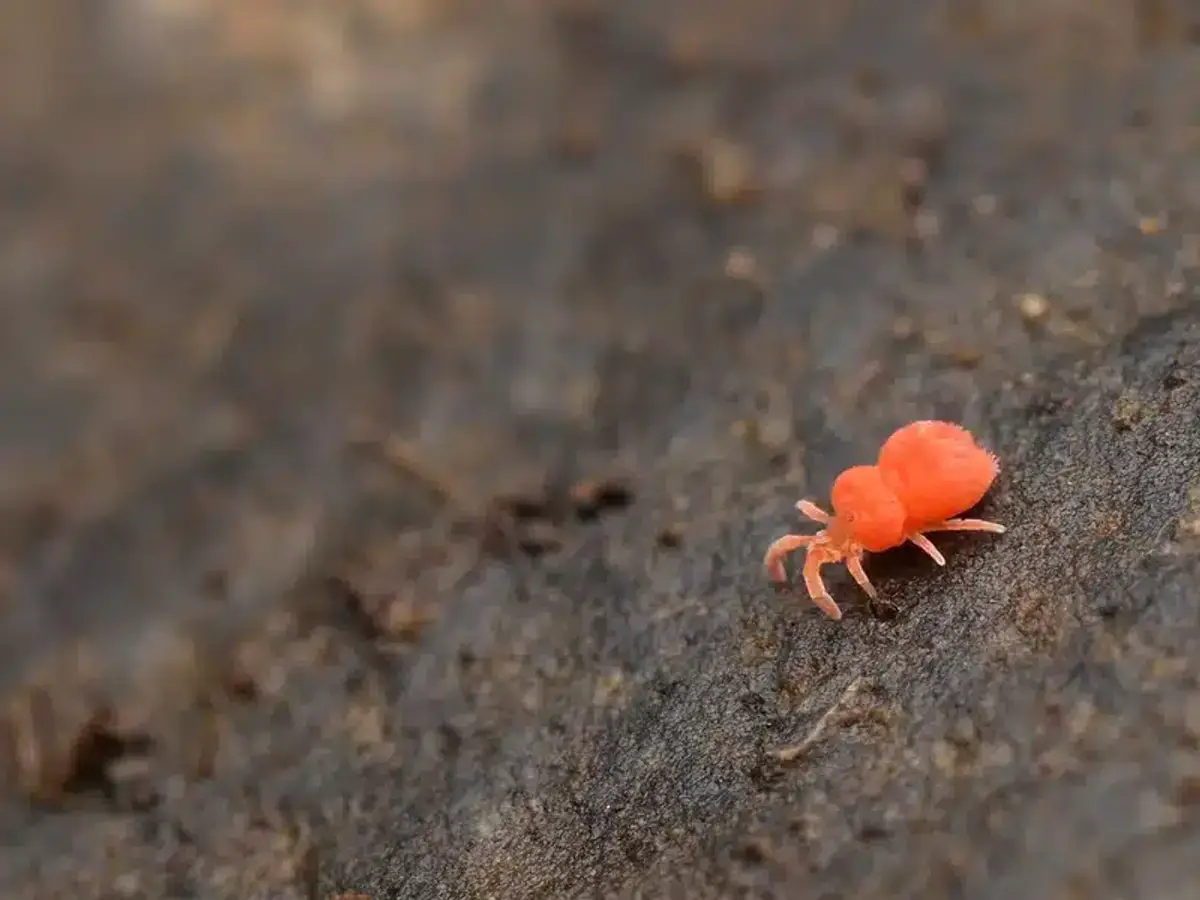
Clover Mites vs Chiggers: Key Differences
Both clover mites and chiggers belong to the same group of eight-legged creatures called arachnids, but they’re from different families with very different lifestyles. Clover mites are plant feeders that live their entire lives munching on grass and clover. Chiggers, on the other hand, are the larval stage of harvest mites that feed on skin cells during their youth.
In my experience working in the DC metro area, clover mites are by far the more common complaint. During spring and fall, I regularly get calls about tiny red mites clustered around the sunny sides of houses. Chiggers are quite rare in our service calls, mainly because they stay outdoors and don’t invade homes like clover mites do.
Size and Appearance: Clover Mites vs Chiggers
While both pests are tiny red bugs visible to the naked eye, there are clear size differences when you look closely. Clover mites measure about 1/30 of an inch, making them roughly the size of a pinhead. Chiggers are much smaller at about 1/150 of an inch - so tiny they often look like moving orange-red dust.
The color difference is another helpful clue. Clover mites appear as a deep brick-red or reddish-brown color, though they can look olive-green after feeding heavily on plant material. Chiggers show up as a brighter orange-red, especially in their larval stage when they’re most likely to bite humans.
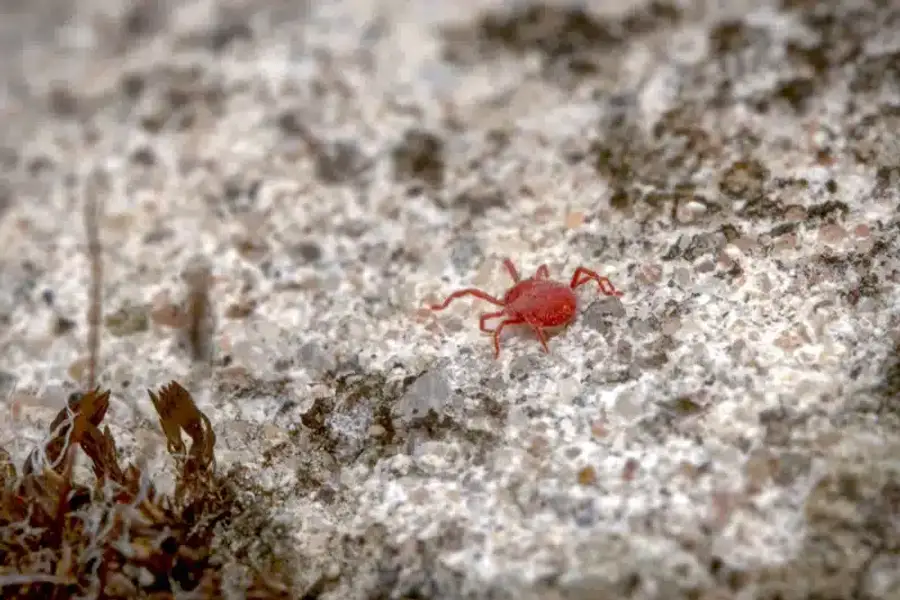
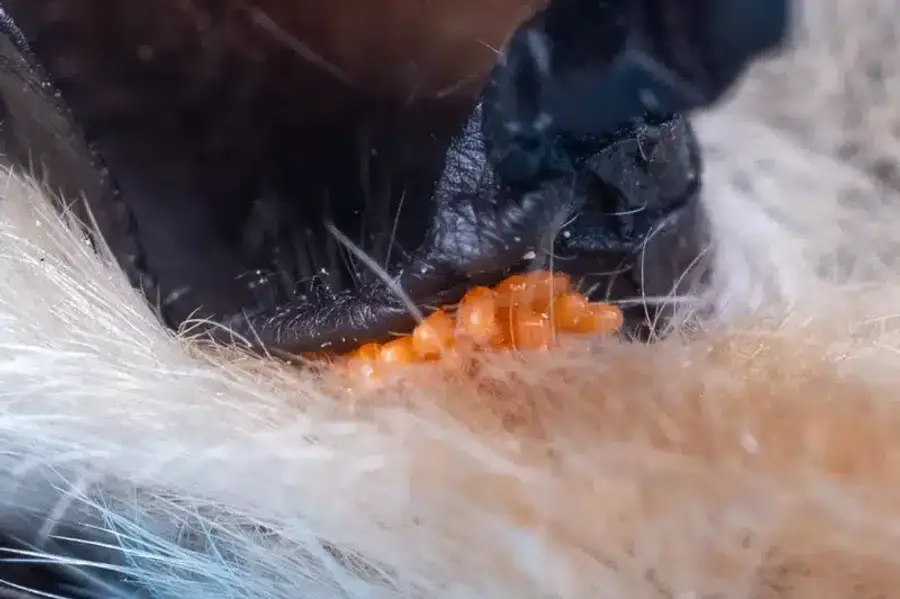
One distinguishing feature of clover mites is their front legs, which are about twice as long as their body and often held forward. These longer front legs are sometimes mistaken for antennae by homeowners. Chiggers, being in their larval stage, have six legs instead of the typical eight legs found on adult mites.
| Clover Mites | Chiggers | |
|---|---|---|
| Size | 1/30 inch (pinhead size) | 1/150 inch (dust-like) |
| Color | Deep brick-red/brown | Bright orange-red |
| Biting | No biting | Intense itchy bites |
| Location | Buildings & indoors | Tall grass & vegetation |
Habitat Differences: Clover Mites and Chiggers
The biggest difference between these pests is where they live and how you encounter them. Clover mites thrive in well-fertilized areas with clover and grass, especially near building foundations. They’re commonly found crawling up concrete walls, gathering on windowsills, and clustering on the sunny sides of houses.
Chiggers prefer completely different habitat conditions. They live in tall grass, brush, woodland edges, and overgrown lawn borders - basically anywhere vegetation creates a transition zone.
What does the science say?
According to University of Missouri Extension research, chiggers are most active in areas with thick vegetation and high humidity. The research shows that chigger larvae concentrate in locations where the microclimate provides optimal conditions for their development, particularly in transitional zones between different vegetation types.

Clover mites regularly get inside your home through tiny cracks and gaps, creating indoor infestations that can involve thousands of individuals. Chiggers don’t survive indoors and rarely make it inside buildings. If you’re seeing tiny red bugs crawling around your windowsills or inside your house, they’re almost certainly clover mites, not chiggers.
The Bite Difference: Why Only One Causes Pain
This is where the difference between clover mites and chiggers becomes really important for your comfort and health. Clover mites do not bite humans or animals at all. They’re plant feeders that spend their time munching on clover, grass, and other vegetation. If you’re experiencing itching or skin irritation, clover mites aren’t the cause.
Chigger bites, however, are a completely different story. Larval chiggers feed on skin cells by injecting digestive enzymes that break down the skin. This process creates intensely itchy red bumps that can last for days or even weeks.
What does the science say?
The University of Kentucky’s entomology research shows that chigger bites cause severe itching that often becomes worse than the initial bite itself. The digestive enzymes create a feeding tube called a stylostome, which continues to irritate the skin even after the chigger detaches, explaining why the itching persists for days.
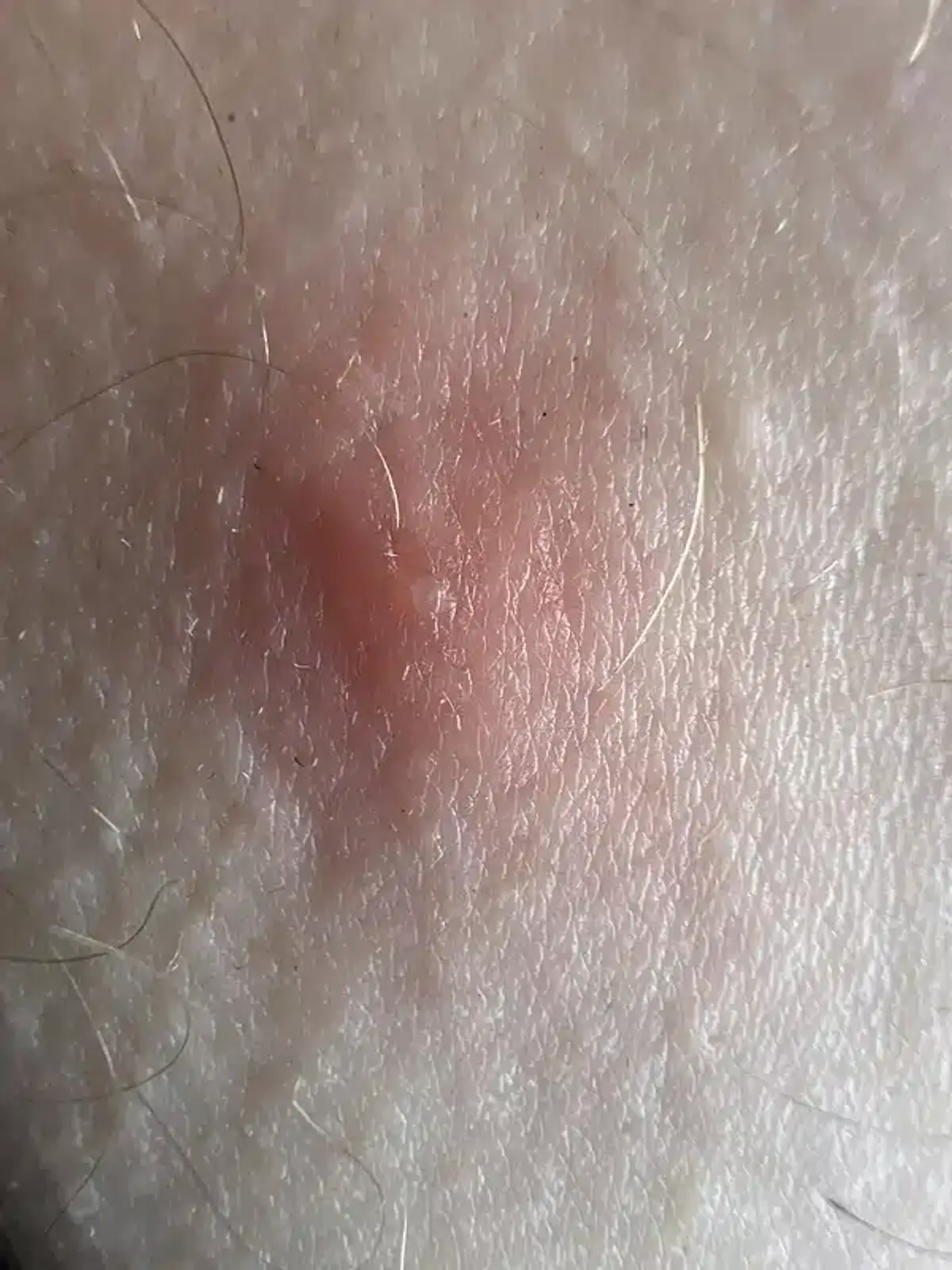
Chiggers attach to your skin for 2-4 days, feeding continuously until they drop off or are removed. The welt and itching that follows can persist for 7-14 days. Adult chiggers do not bite - only the six-legged larva stage poses a threat to humans.
Seasonal Activity Patterns
Understanding when each pest is active helps with both identification and prevention. Here in the DC metro area, I see a noticeable spike in clover mite activity during brief windows in spring and fall. March through May and September through early November are the peak times when clover mites become a nuisance around homes.
Clover mites are most active during cooler weather and actually go dormant when temperatures exceed 85°F during summer months. They often appear on warm, sunny days during otherwise cool periods, which is why homeowners suddenly notice them crawling on patios and windowsills.
Chiggers follow the opposite pattern. They’re warm-weather pests that become active when soil temperatures reach around 60°F and remain active until the first hard frost. Peak chigger activity occurs during late spring and late summer when vegetation is lush and humidity is high.
Clover Mite Infestations vs Chigger Problems
The location where you encounter these pests tells you almost everything you need to know. If you’re dealing with tiny red bugs indoors - especially around windows, doors, or on walls - you’re looking at clover mites. These indoor invaders can become a significant nuisance, with thousands of individuals entering through the smallest cracks.
One homeowner I spoke with described how clover mites covered her windowsills and patio, especially on the sunny side of her house. When she accidentally stepped on them, they left behind a noticeable red stain - something that’s unique to clover mites and helps distinguish them from other tiny bugs.
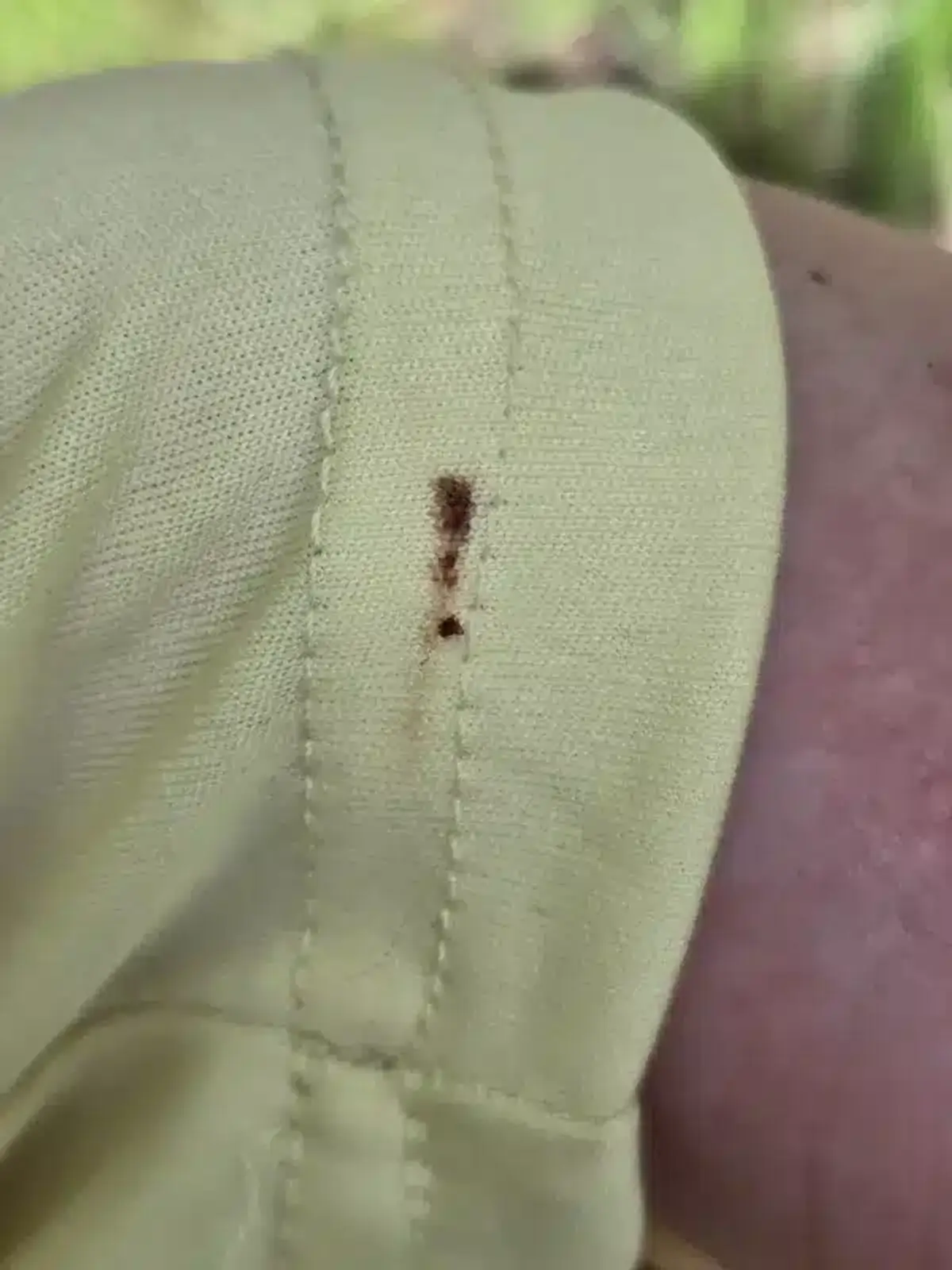
Chigger problems are strictly outdoor issues. You encounter chiggers while walking through grassy areas, gardening, hiking, or playing in areas with thick vegetation. They don’t establish indoor populations or crawl around on building surfaces like clover mites do.
The Red Stain Test for Identification
One of the most reliable ways to confirm you’re dealing with clover mites is the red stain test. When crushed, clover mites leave a distinct red stain from pigments in their body. This creates a rusty or blood-red streak that’s particularly noticeable on light-colored surfaces.
I always recommend this simple test to homeowners who aren’t sure what they’re dealing with. If you smear a suspected mite on white paper or fabric and see a bright red streak, you can be confident you’re looking at clover mites. Chiggers are rarely found crawling around indoors where you could easily perform this test.
The stain from clover mites can actually become a bigger problem than the mites themselves. They can permanently stain curtains, paint, fabrics, and other household items if crushed against them. This is why I recommend vacuuming or wiping them up with a damp cloth rather than crushing them.
Health Implications and Medical Concerns
From a health standpoint, these two pests couldn’t be more different. Clover mites are completely harmless to humans and pets. They don’t bite, don’t spread disease, and don’t cause any direct health problems. The main concern with clover mites is the nuisance factor and potential staining of household items.
Chiggers pose a more significant health concern due to their bites. While they don’t transmit diseases in North America, chigger bites cause intense itching that can lead to secondary infections from scratching. The digestive enzymes they inject create a feeding tube that irritates skin for days after the chigger has detached.
What does the science say?
University of Maryland Extension research confirms that chigger larvae feed on skin cells and inject digestive fluids that cause the characteristic itchy welts. The good news is that in our region, chiggers aren’t known to transmit serious diseases like they do in some other parts of the world.
How to Get Rid of Clover Mites and Chiggers
Because clover mites and chiggers have different habits and habitats, preventing them requires different approaches. For clover mites, focus on exclusion and reducing attractive conditions around your home’s foundation.
Essential Clover Mite Prevention Steps
- Foundation Barrier: Maintain an 18-24 inch vegetation-free strip around your foundation using gravel or mulch
- Seal Entry Points: Caulk cracks around windows, doors, and foundations to prevent indoor invasion
- Fertilization Control: Avoid heavy nitrogen fertilization near walls that attracts clover mites
- Professional Treatment: Apply perimeter treatments during peak activity periods in spring and fall
University of Maryland Extension recommends these cultural controls as the most effective long-term approach.
Chigger prevention focuses on personal protection and habitat modification. When in grassy or wooded areas, wear long pants tucked into socks, use insect repellents containing DEET or picaridin, and treat clothing with permethrin. After potential exposure, take a hot soapy shower within an hour.
For long-term chigger control around your property, keep grass mowed short, remove brush and debris, and prune lower shrub branches to increase light and airflow. These changes make the habitat less suitable for chiggers to thrive.
Professional Pest Control for Clover Mite Infestations
When prevention isn’t enough, professional pest control treatments target these pests differently based on their biology and behavior. For clover mite infestations, we typically focus on perimeter treatments using non-repellent products applied by licensed technicians.
In my experience, clover mite problems can usually be brought under control with one or two scheduled treatments. We focus especially on the sunny sides of buildings where clover mites are most active. The treatment creates a barrier that prevents new mites from entering while existing indoor populations naturally decline.

Chigger control requires a different approach focused on targeted vegetation treatments. Professional treatments use products like bifenthrin or permethrin applied to vegetation up to 3 feet high in problem areas. These treatments provide relief for 1-2 weeks but need reapplication during peak chigger season.
The key difference is that clover mite treatments focus on building perimeters and entry points, while chigger treatments target outdoor vegetation and habitat areas. This is why proper identification is so important - using the wrong treatment approach wastes time and money.
Why Accurate Identification Matters for Treatment
Getting the identification right between clover mites and chiggers makes all the difference in solving your pest problem effectively. Misidentifying clover mites as biting bugs can lead to unnecessary medical treatments and wrong pest control approaches.
I’ve seen homeowners spend money on the wrong treatments because they thought harmless clover mites were causing mysterious bites. Meanwhile, actual chigger problems require personal protection strategies and outdoor habitat management that won’t help with indoor clover mite invasions.
Accurate identification also prevents unnecessary worry. Knowing that those tiny red bugs in your house are harmless clover mites rather than biting pests brings peace of mind. It shifts the focus from health concerns to simple nuisance management.
Professional pest control companies like ours can quickly identify which pest you’re dealing with and apply the right treatment strategy. This targeted approach gets better results faster than trying general treatments that don’t address the specific pest’s biology and behavior.
When to Call a Professional
While minor clover mite problems can sometimes be managed with vacuuming and exclusion, larger infestations often require professional treatment. If you’re seeing hundreds or thousands of tiny red mites around your windows and doors, it’s time to call for help.
For chigger problems, professional treatment becomes valuable when you have recurring bite incidents in your yard or when habitat modification alone isn’t providing relief. A registered technician can identify the specific areas where chiggers are most active and apply targeted treatments.
The decision often comes down to the scope of the problem and your comfort level with DIY approaches. Professional pest control ensures you get the right identification, appropriate treatment products, and follow-up service if needed.
Conclusion
Understanding the difference between clover mites and chiggers helps you respond appropriately to these tiny red pests. Remember that clover mites are harmless indoor invaders that don’t bite, while chiggers are outdoor pests that cause intensely itchy bites. The red stain test, seasonal timing, and location where you encounter them all provide clues for accurate identification.
Whether you’re dealing with a clover mite infestation around your windows or chigger bites from outdoor activities, the right identification leads to the right solution. Don’t let these tiny pests disrupt your comfort at home or outdoors.
Frequently Asked Questions
How can you tell the difference between clover mites and chiggers?
+
The easiest way to tell clover mites and chiggers apart is by location and behavior. Clover mites crawl around on buildings, windows, and indoors, while chiggers stay in tall grass and vegetation outdoors. Clover mites are larger (1/30 inch vs 1/150 inch), leave red stains when crushed, and don't bite. Chiggers are smaller, orange-red, and cause intensely itchy bites.
How do I know if I have mites or chiggers?
+
Look at where you're seeing the pests and whether you're experiencing bites. If you see tiny red bugs crawling on your house, windows, or indoors without any biting, you likely have clover mites. If you're getting itchy bites after being in grassy or wooded areas, you're probably dealing with chiggers. The red stain test works for clover mites - crush one on white paper and look for a bright red streak.
Can clover mites give you a rash?
+
No, clover mites cannot give you a rash because they don't bite humans at all. Clover mites are plant feeders that only eat vegetation. If you're experiencing a rash or skin irritation, it's not from clover mites. You might be dealing with chiggers, which do cause itchy welts and skin reactions, or another pest entirely.
How to get rid of clover mites and chiggers?
+
Treatment differs for each pest. For clover mites, focus on sealing entry points, maintaining vegetation-free zones around your foundation, and professional perimeter treatments. For chiggers, use personal protection like long pants and repellents, keep grass mowed short, and consider targeted vegetation sprays in problem areas. Since they have different habitats and behaviors, accurate identification is crucial for effective control.
Are clover mites dangerous to humans or pets?
+
Clover mites are completely harmless to both humans and pets. They don't bite, sting, or transmit diseases. The main problems they cause are nuisance issues and potential staining when crushed. Unlike chiggers, which cause itchy bites, clover mites pose no direct health threat and are simply a cosmetic concern when they invade homes.
Why do I suddenly have so many clover mites?
+
Clover mites appear suddenly during spring and fall when temperatures are perfect for their activity. They're most active on warm, sunny days during cooler seasons and often surge when they're seeking shelter or moving between feeding and overwintering sites. Heavy fertilization of lawns near your foundation and well-watered vegetation can also attract larger populations.
How long do chigger bites last?
+
Chigger bites typically cause itching that can last 7-14 days, with the most intense itching occurring 24-48 hours after the bite. The chigger itself feeds for 2-4 days before dropping off, but the skin reaction continues well after the chigger is gone. Secondary infections from scratching can extend healing time, so avoid scratching and use anti-itch treatments.
With five years of hands-on experience in the pest control industry, George Schulz is a registered technician with the Virginia Pest Management Association and a proud third-generation professional in a family business that's been protecting homes for over 57 years. He manages and trains a team of service pros while also leading internal research efforts—recently spearheading a deep-dive review of thousands of documents on pest control materials to hand-pick the most kid and pet friendly, most effective solutions tailored specifically for homes in the DC metro area.
